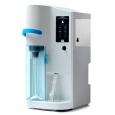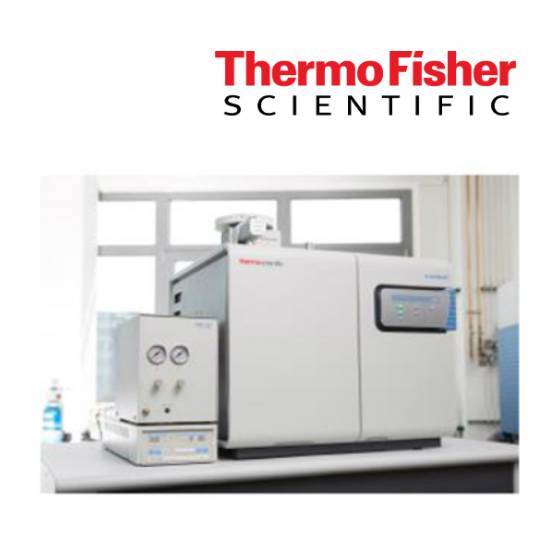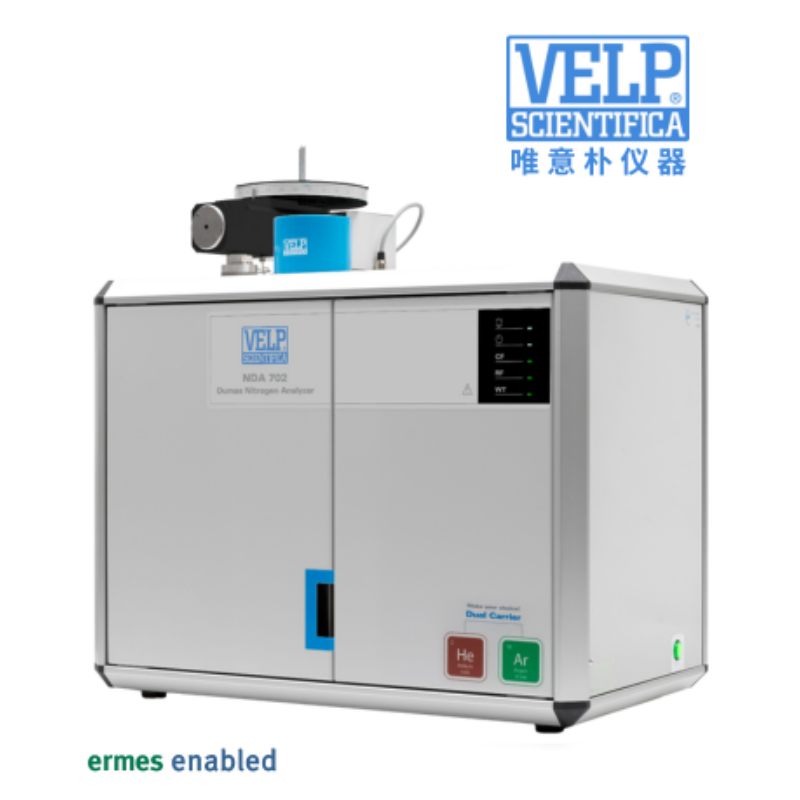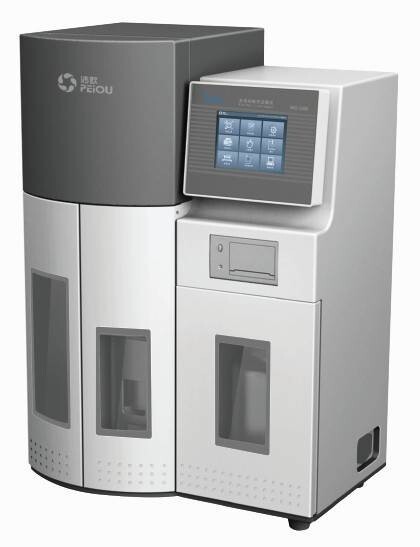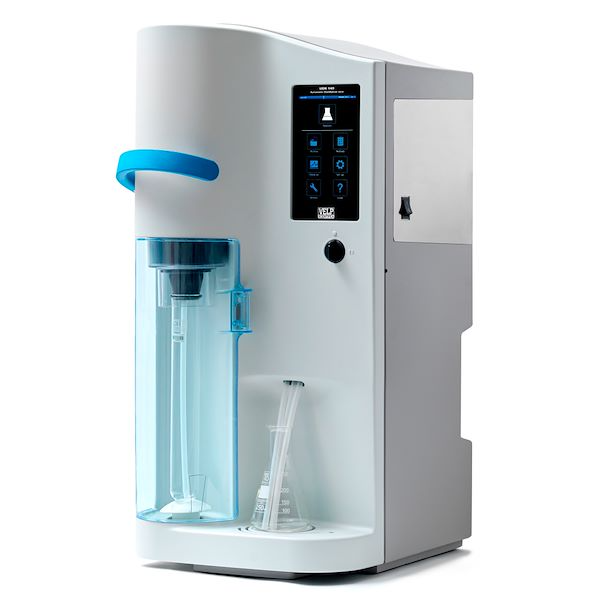
采用意大利VELP凯氏定氮仪检测葡萄酒酒精度,结果可靠,重现性与期望值一致,相对标准偏差较小(RSD<1%),重复性好。
方案详情

APPLICATION NOTEF&F-K-008-2013/A2 ALCOHOLIC STRENGTH IN WINE Alcoholic Strength in Wine Reference: OIV Method -MA-AS312-01A-Alcoholic strength by volume Tested with VELP Scientifica UDK 149 Automatic Kjeldahl Distillation Unit (Code F30200140) Introduction Wine is one of the most ancient alcoholic beverage: its consumption is widespread around the world and it is a part ofcustoms and tradition of many people. It is produced solely by fermentation (total or partial) of the fruit of the vine,grapes (either pressed or not), or must, and it is dependent on the complex biochemical transformations caused by microorganisms (e.g. Saccharomyces cerevisiae) and influenced by technical and environmental factors. The ethylic alcohol, produced during the fermentation, determines the alcoholic strength and it can be measured byvolume as "the number of liters of ethanol contained in 100 liters of wine, both volumes being measured at temperatureof 20℃. It is expressed by the symbol %vol". Alcoholic Determination in Wine Steam distillation is a method to determine the alcoholic strength in wine, made previously alkaline by a suspension ofcalcium hydroxide: the distillate obtained is an ethanol - water mixture and, using a measurement of density by apycnometer and expressing the results through the official tables, the alcoholic strength can be calculated. Sample talian Red Wine Alcoholic strength by volume (labeled value): 11.5% vol Sample Preparation To remove the carbon dioxide, stir gently the sample (1000 ml in a 2000 ml flask) with a VELP magnetic stirrer. Chemicals and Equipment - Suspension of calcium hydroxide 2 M: 120 grams of CaO in 1 liter of water at 60-70 °℃ -Alcoholic strength kit (code A00000285) composed by: -Tweezer for closing the NaOH tube -Kjeldahl balloon 500 ml for the distillation of sample (Code A00000082)-Pycnometer (volume 100 ml or 50 ml) -200 ml volumetric flasks with stopper -Analytical balance -Cooled Incubator (VELP Scientifica FOC Series i.e. code F10400320) Procedure Measure out 200 ml of the wine using a graduated flask and thermostat it at 20 °C. Let the sample adjust to temperature,this will take about 15 minutes. Bring down the volume of the sample exactly 200 ml by taking away excess sample by asmall pipette. Transfer the wine to the 500 ml test tube. In order to collect all the mixture residues, rinse the volumetricflask four times with successive 5 ml washings of water and add 10 ml of distilled water as receiving solution in the samevolumetric flask. Then, pour 10 ml of the suspension of calcium hydroxide to the test tube. The colour of the wine mustchange from red to deep grey. Forvery acid wines, it’s suggested to add some drops of phenolphthalein in the test tube,until the color of the indicator changes. Place the volumetric flask in a beaker filled with cold water and ice, next to theUDK149. Insert the distillate outlet tube (it must be put in contact with the receiving solution) and fix it well usingparafilm. Distillation Condition the UDK 149 unit by performing a Wash down and distill the samples setting the method below: ● H2O (dilution water): 0 ml NaOH (32%): 0 ml H3BO3 (4% with indicators):0 ml ● Steam Power: 8 0 % Distillation Time: 6.30 minutes * * In UDK 149 settings, set a distillation time to obtain a maximum of 200 ml of distillate. After the distillation, position thereceiving flask in the thermostat for about 15 min. and finally bring up to volume (200 ml) using distilled water at 20 °℃. Density of the Distillate Measure the density of the distillate through a pycnometer: 1.Weigh the empty pycnometer, clean and dry, with all parts in place (Mpyc in g) 2. Weigh the pycnometer filled with the distillate at 20 ℃ (Mdist in g) 3. Calculate the density of the distillate at 20 °℃ (Ddist 20℃) following the formula: Vpyc(m) is the volume of the empty pycnometer and is calculated as follows: Where: Mpyc, H2o= pycnometer weight filled with water at 20°℃ (g) pH20,20c= density of the water at 20 °℃ (0.99823 g/ml) 4. Use the density table to express the results (OIV method -MA-AS312-01A) 5. Among measurements rinse the pycnometer with the next alcoholic solution. 6. During the entire procedure take care to avoid fat from fingertips, temperature changes when holding the pycnometerand air bubbles in it. Typical Results on Red Wine Sample quantity (ml) Alcohol strength (%vol) ** 200 11.48 200 11.65 200 11.49 200 11.48 200 11.58 Average ±SD% 11.54±0.08 RSD%* 0.7 *RSD% =(Standard Deviation x 100) / Average ** For results conversion, official standard tables (OIV method-MA-AS312-01A) have been used. For the verification of the distillation apparatus, the OIV Method-MA-AS312-01A specifies that, distilling an ethanolwater mixture with an alcoholic strength of 10% vol. five times in succession, the loss of alcohol must be smaller than0,02% vol. during each distillation. The UDK 149 satisfies completely the OIV Method-MA-AS312-01A. Conclusion The obtained results are reliable and reproducible in accordance with the expected values, with a low relative standarddeviation (RSD <1%), that means high repeatability of the results. Benefits of UDK 149 are: High level of precision and reproducibility High productivity Worldwide official method Reliable and easy method . Time saving Affordable equipment cost Moderate running costs 酒是最古老的酒精饮料之一,消费遍及世界各地,它是许多人的风俗和传统的艺术。它完全由葡萄果实(压榨或不压榨)发酵(全部或部分)产生,依赖于微生物(如酿酒酵母)引起的复杂生化转化,并受技术和环境因素的影响。发酵过程中产生的乙醇决定了酒精的强度,它可以用体积来测量,如100升葡萄酒中所含的乙醇的升数,这两种体积都是在20摄氏度的温度下测量的,用符号%vol表示。检测样品Italian Red Wine 按体积计算的酒精强度(标记值): 11.5% vol检测仪器UDK 149凯氏定氮蒸馏装置 (意大利 VELP)参考标准OIV Method - MA - AS312 - 01A - Alcoholic strength by volume检测结果结果可靠,重现性与期望值一致,相对标准偏差较小(RSD<1%),重复性好。
确定
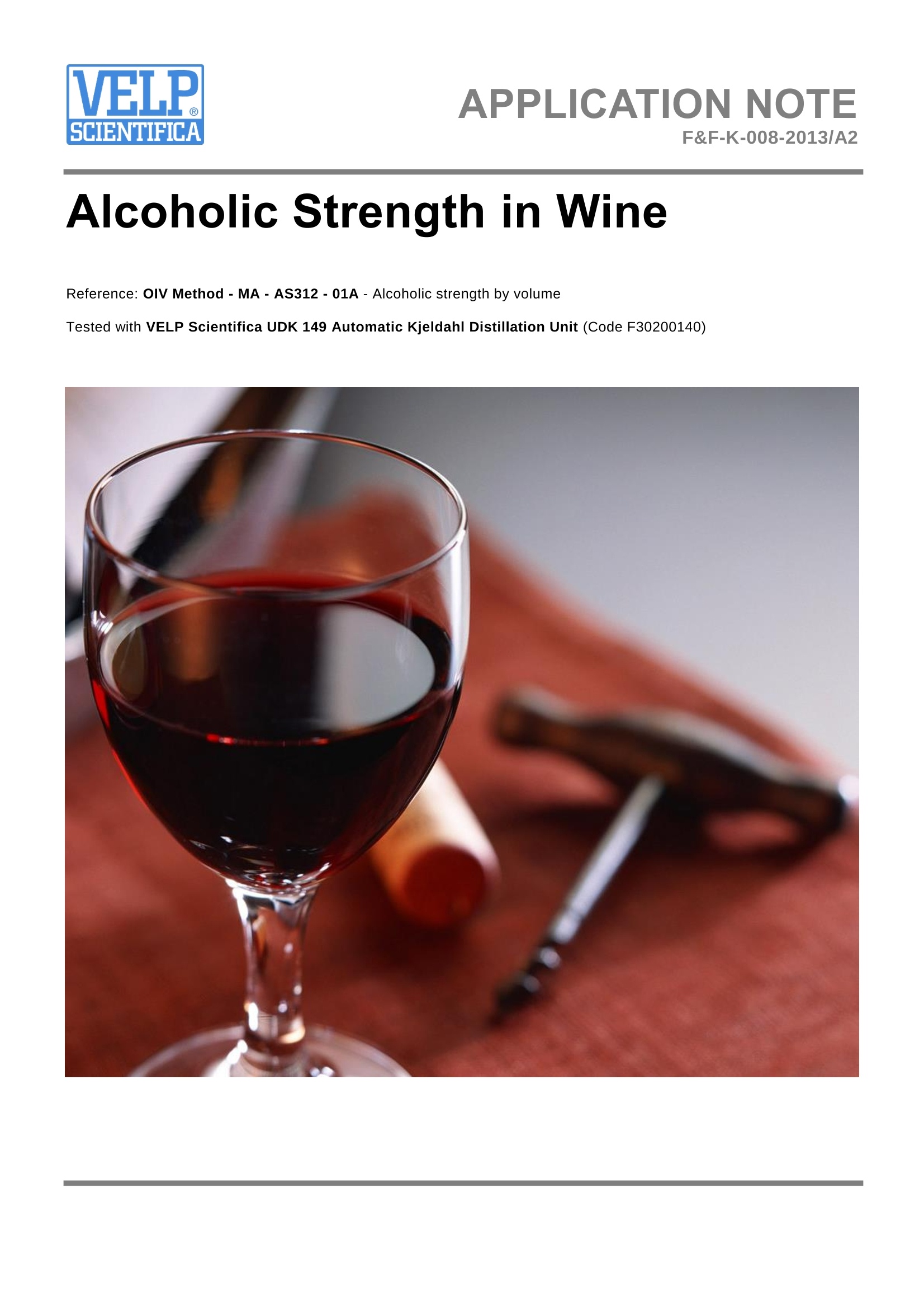
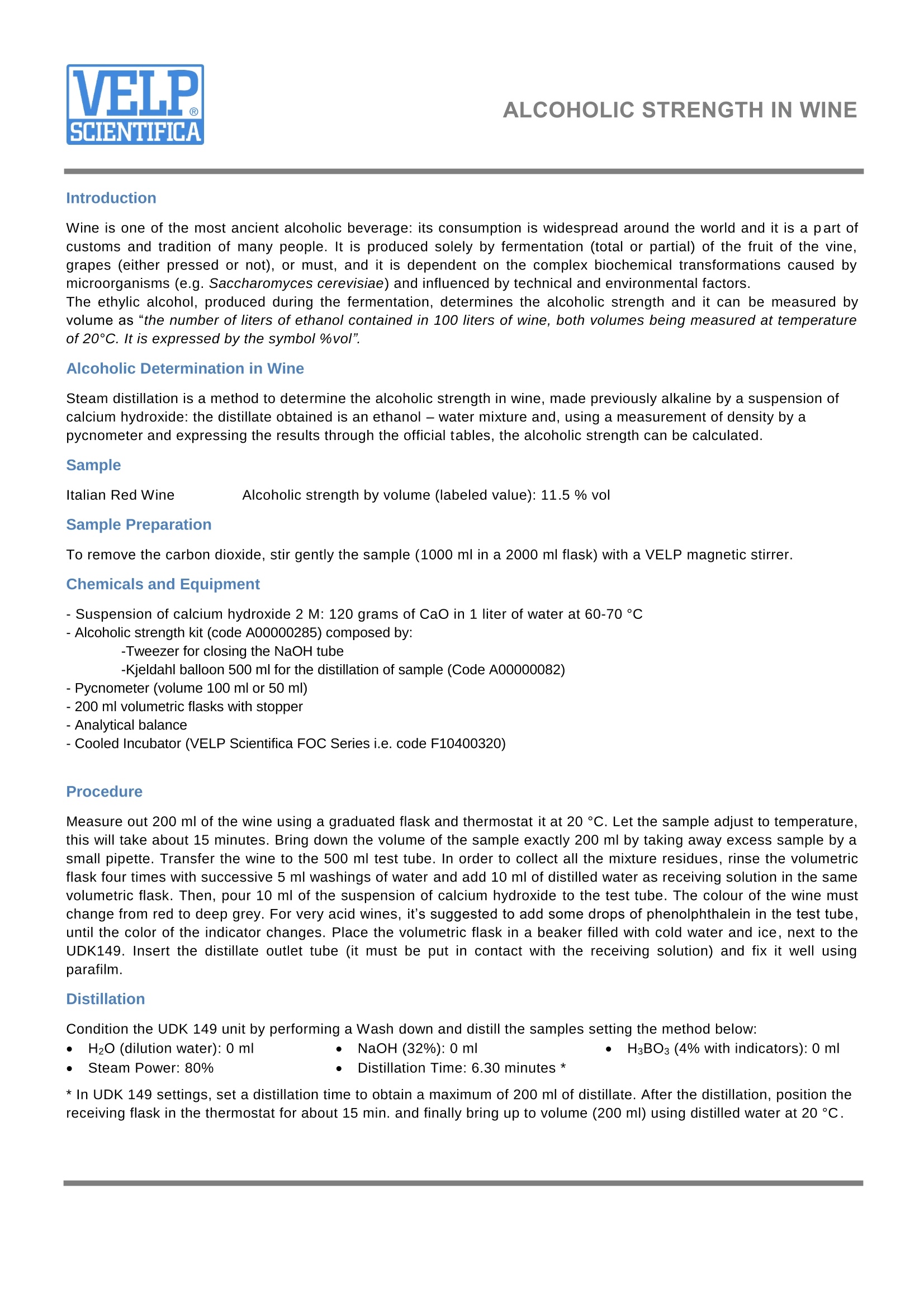
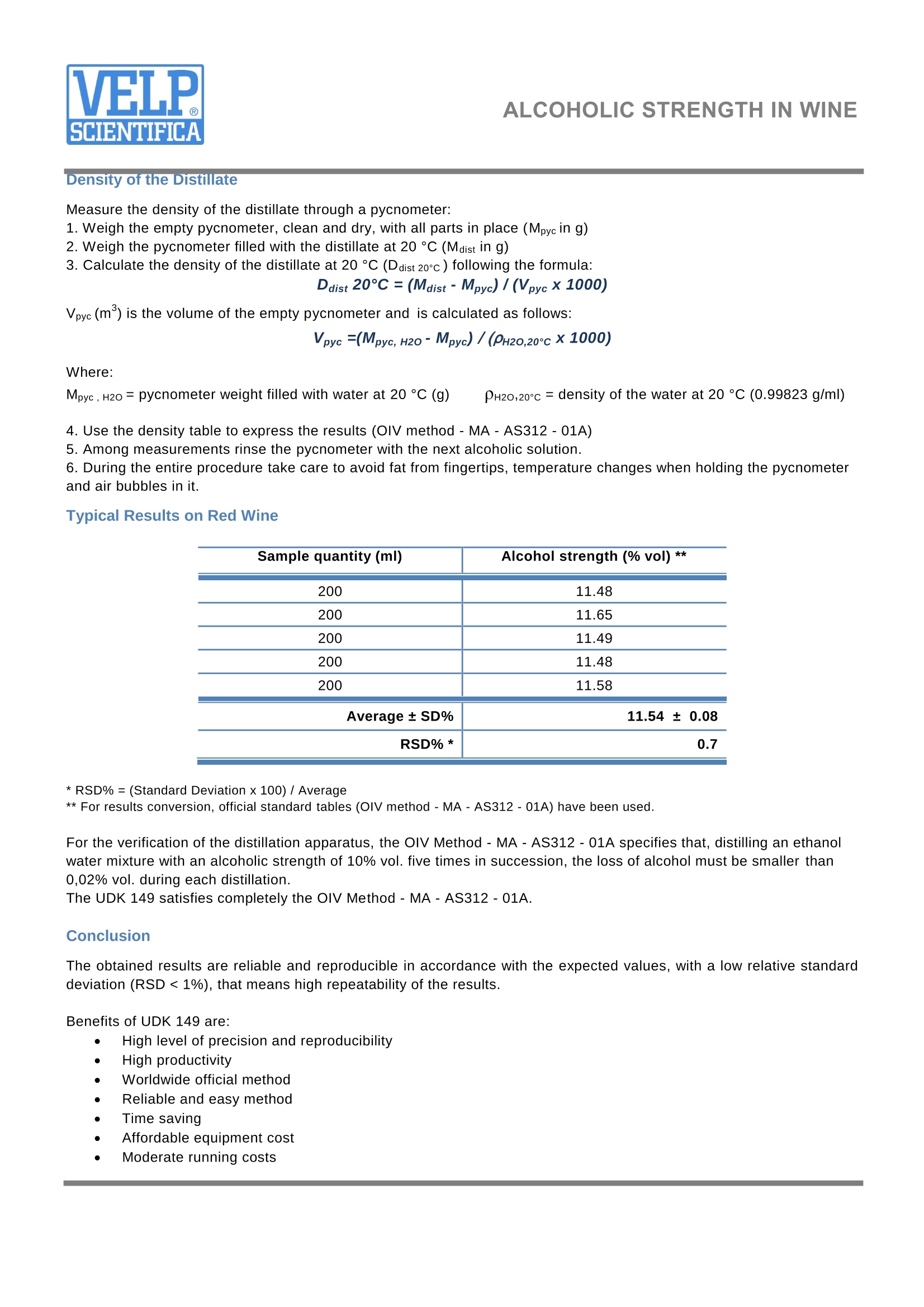
还剩1页未读,是否继续阅读?
北京盈盛恒泰科技有限责任公司为您提供《葡萄酒中酒精度检测方案(定氮仪)》,该方案主要用于葡萄酒及果酒中理化分析检测,参考标准--,《葡萄酒中酒精度检测方案(定氮仪)》用到的仪器有VELP-全自动凯氏定氮仪UDK149
推荐专场
相关方案
更多
该厂商其他方案
更多









